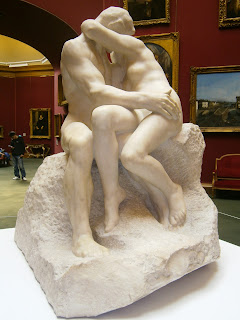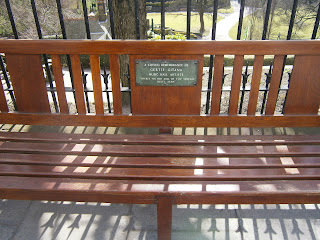 Sammy the squirrel was easy to spot on such a glorious day. He was beside himself with excitement at the first real sight of spring. The tartan scarf now abandoned, the tam o' shanter still perches precariously on his head "just in case the odd chill wind catches me by surprise." Rarely have I seen Sammy so animated, so eager to sit and chat. Sitting upright on his back legs, a somewhat mischievous glint in his eyes, he looks around as if awaiting an audience, before rubbing his front paws together in delight and launching into his "welcome to spring" speech.
Sammy the squirrel was easy to spot on such a glorious day. He was beside himself with excitement at the first real sight of spring. The tartan scarf now abandoned, the tam o' shanter still perches precariously on his head "just in case the odd chill wind catches me by surprise." Rarely have I seen Sammy so animated, so eager to sit and chat. Sitting upright on his back legs, a somewhat mischievous glint in his eyes, he looks around as if awaiting an audience, before rubbing his front paws together in delight and launching into his "welcome to spring" speech. "Look at this, just look at all this. Someone has finally returned the sun to the sky and what an effect it has had. Listen to that birdsong, a welcoming fanfare if ever I heard one. And the flowers, just look at the flowers. Colour everywhere you look. The waterfalls have returned. What wonderful music they make. Children are laughing and playing, people are eating outside ....... I bumped into Robbie Robin earlier and he was hopping around in sheer delight. People eating outside means crumbs, and crumbs mean happy robins. I only have one complaint - a very minor one of course, although I do so hate to break the magical spring spell." He beckons me a little closer, and as I lean forward he whispers: "The frogs. Lovely to see them, of course, and it can't be an easy life keeping an eye out for the long beak of Hamish the heron. But take a look at the pond ........ our slimy friends are spawning. I know the cycle of life must continue, but I do wish they would do it a little more quietly. That incessant croaking drives one to distraction. But shouldn't complain I suppose ....." Is that the hint of a smile I see on Sammy's face? Updating me on the current status of his offspring, he tells me they are starting to spread their wings - or should that be tails. Seems like only yesterday he was fretting about their imminent arrival. "Won't be long before I can stretch out and enjoy my newspaper in peace" he adds, before raising his tam o' shanter politely, bidding farewell, and scurring off across the grass.
"Look at this, just look at all this. Someone has finally returned the sun to the sky and what an effect it has had. Listen to that birdsong, a welcoming fanfare if ever I heard one. And the flowers, just look at the flowers. Colour everywhere you look. The waterfalls have returned. What wonderful music they make. Children are laughing and playing, people are eating outside ....... I bumped into Robbie Robin earlier and he was hopping around in sheer delight. People eating outside means crumbs, and crumbs mean happy robins. I only have one complaint - a very minor one of course, although I do so hate to break the magical spring spell." He beckons me a little closer, and as I lean forward he whispers: "The frogs. Lovely to see them, of course, and it can't be an easy life keeping an eye out for the long beak of Hamish the heron. But take a look at the pond ........ our slimy friends are spawning. I know the cycle of life must continue, but I do wish they would do it a little more quietly. That incessant croaking drives one to distraction. But shouldn't complain I suppose ....." Is that the hint of a smile I see on Sammy's face? Updating me on the current status of his offspring, he tells me they are starting to spread their wings - or should that be tails. Seems like only yesterday he was fretting about their imminent arrival. "Won't be long before I can stretch out and enjoy my newspaper in peace" he adds, before raising his tam o' shanter politely, bidding farewell, and scurring off across the grass. The wildlife pond is indeed a hive of activity. So many frogs, so much noise, and so many parents awaiting the inevitable questions from their youngsters. Frogspawn holds a fascination for children, this jelly-like substance
 floating as if by magic, clinging together, filling
floating as if by magic, clinging together, filling every spare inch of water. Excited children watch this spectacle wide-eyed, almost willing the tadpoles to appear without delay. And they will ..... soon. Hundreds of them, darting in and out like little black commas. I have always thought of tadpoles as little black commas. Is that the writer in me or just the strange way my mind works? Or maybe a bit of both .... Anyway, I am now off to soak up the sun, wander up to
the Terrace Cafe and partake of cake and a cuppa outside. The Botanics ...... what a glorious place to be when the weather is at its very best!































